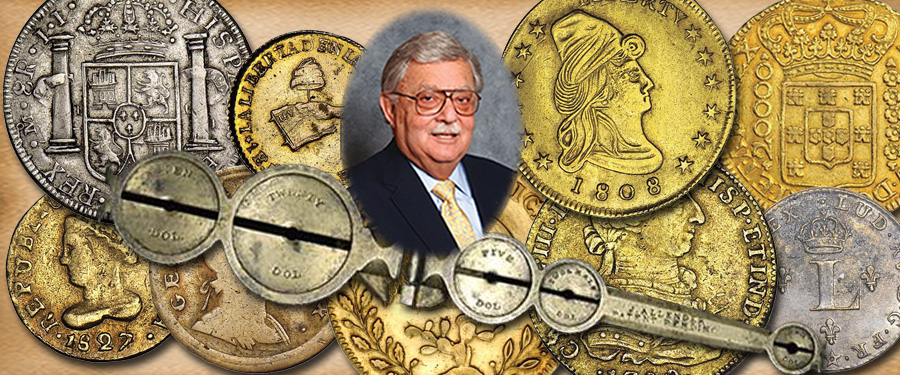
Now after giving you some of the background let me bring you further up to date on efforts to deal with counterfeiting. Even after all the government’s attempts to stop them, counterfeiters continued to make gold coins and there were items already in the U.S. market. Collectors could be taken in by counterfeit gold coins and not know where to take them for verification. Not everyone lived near or had access to dealers with the knowledge and qualifications to help. Counterfeits continued to be offered by promoters and jewelers as "bargain priced coins."
Because of this the American Numismatic Association, the largest coin collector association in the world at that time, called together a group of over 50 dealers to meet at their headquarters in Colorado Springs, Colorado, to address the situation. Discussions were held to determine what actions these leading dealers could suggest to educate numismatists and stop counterfeiting and its negative effects on the hobby.
As a result of that meeting the American Numismatic Association Certification Service (ANACS) was created, which would, for a small fee, examine submitted coins and verify them as genuine. Those “certified” as genuine would be photographed, the photo and the coin were sent back to the collector, and a copy of the picture was placed in ANA files.
At the same meeting it was decided by the ANA to adopt numerical grading, a system using adjectival and numerical grading. This system would follow an already accepted system that had been established for large cents in a 1949 (revised in 1954) book by Dr. William Sheldon, a noted expert on United States copper coins.
The photographic record made by the ANA was flawed, as the photo was not attached in any way to the graded and verified coin, and the photo could be “switched” to a coin that resembled the one in the photo. This made it impossible to guarantee that the “authentications” were not being used for counterfeits, altered coins, cleaned and polished coins and others that were false, or doctored. Thus, the “Scammers” still had a field day.
Third-party grading services were born in the mid 1980s to provide both authentication and grading of coins, with the additional service of placing the coins in sealed plastic holders called "slabs.” Over the years this has grown to become a standard practice in the hobby, with a tremendous effect on the numismatic marketplace. Some people think that third-party grading and “slabbing” have had a detrimental effect, resulting in a market that is overly dependent on what some consider to be arbitrary opinions at the grading services. In addition, many millions of coins have been “slabbed” and in some cases coins “reslabbed,” with the hope that the value of the coins can be increased if a better grade can be achieved.
The grading provided by the grading services will always be the subject of debate. In all the years that I have been active in numismatics I learned from experience that the grade of a coin is in the eye of the beholder.
But it is important to recognize the essential role that grading services play in providing authentication for collectors who might otherwise be the victims of counterfeiters and other scammers. These grading services and their staffs of qualified experts give collectors, especially those just starting out, the confidence that the items being purchased are not counterfeit, false, or in some other way a misrepresentation.





